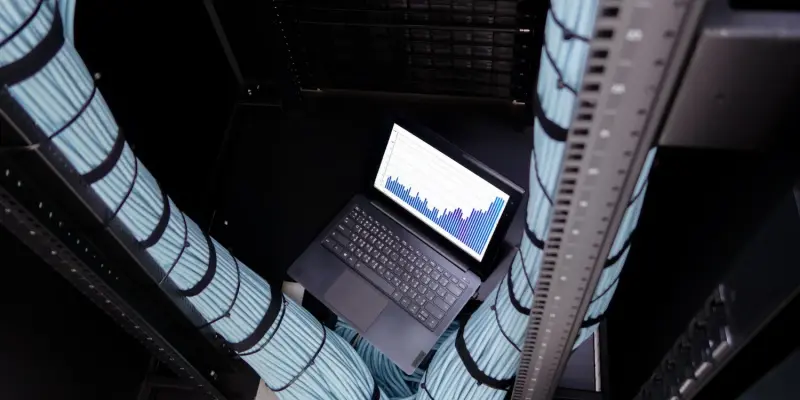Understanding the Vulnerabilities
CVE-2025-24916: Improper Access Control
The first vulnerability, CVE-2025-24916, targets installations in non-default directories, creating openings for privilege escalation through inadequate directory permissions. This flaw stems from improper enforcement of secure permissions, allowing attackers to exploit access control weaknesses. The installer, which should enforce strict permissions, fails to do so effectively, leaving subdirectories accessible to unauthorized actors. Such vulnerabilities magnify at the local level, often without detection, leading to potential threats emerging from seemingly secure systems.
Exposing systems to local threats poses a unique challenge as they exploit vulnerabilities inherent to individual configurations. These weaknesses might not be evident initially but become apparent when malicious actors leverage them to gain elevated access. Once attackers identify the oversight in permission settings, they can maneuver within the system with unprecedented access, compromising sensitive network operations. This scenario highlights the necessity of thorough scrutiny of installation procedures to prevent privilege escalation vulnerabilities, which can destabilize even well-protected environments.
CVE-2025-24917: Arbitrary Code Execution
CVE-2025-24917 presents a more complex threat by enabling non-admin users to stage malicious files within local directories. In doing so, attackers can perform arbitrary code execution with SYSTEM privileges, drastically increasing the risk posed to Windows environments. Unlike CVE-2025-24916, this vulnerability doesn’t require user interaction, demanding only local access. This ease of activation significantly broadens the scope of potential attacks. Environments with shared systems are particularly vulnerable, as any user with minimal access could theoretically elevate to full system control. The unfettered access potential inherent in arbitrary code execution threats can compromise entire Windows hosts. Given the elevated privileges attackers could gain, a single breach can lead to cascading security failures, extending beyond initial points of infiltration. This vulnerability underscores the critical need for continuous monitoring and regular updates to safeguard against exploitation attempts. Recognizing the severity of such threats is essential for organizations striving to maintain robust security frameworks across their networks, ensuring foundational security measures aren’t bypassed by localized vulnerabilities.
Addressing the Threats
Comprehensive Updates with Version 6.5.1
In response to the vulnerabilities, Tenable Network Monitor released version 6.5.1, implementing necessary patches and updates to third-party libraries. These five libraries—OpenSSL, expat, curl, libpcap, and libxml2—underpin the network’s passive monitoring functionality, forming the core of its deep packet inspection capabilities. Ensuring these components remain updated is vital to preserve the system’s integrity. Each library update focuses on patching known security issues, thus fortifying network defenses against both known and emerging threats. It’s crucial as these libraries play a fundamental role in analyzing enterprise network vulnerabilities efficiently and effectively. For organizations utilizing Tenable Network Monitor, prioritizing these updates offers a strategic advantage. Regularly integrating updated libraries guarantees that the systems remain resilient against potential exploit attempts. Additionally, implementing version 6.5.1 not only addresses the immediate concerns but also proactively protects the network from future vulnerabilities. As these libraries enable comprehensive traffic analysis, maintaining their security integrity becomes synonymous with safeguarding enterprise networks, ensuring that packets are inspected reliably without being hampered by unresolved security issues.
Urgent Recommendations for Administrators
With the vulnerabilities in focus, upgrading to version 6.5.1 has been heavily recommended by Tenable for all Windows-based deployments. This upgrade should be undertaken through the Tenable Downloads Portal, a step deemed crucial for installations across supported platforms like Windows 10, Server 2012, Server 2016, Server 2019, and Server 2022. Key actions include enforcing proper Access Control Lists (ACLs) on non-default installation directories, solidifying the restrictions around directory access to preempt privilege exploits. Besides updating to the latest version, administrators must ensure enhanced security controls, particularly those governing web interface access. Secure web access is pivotal, ensuring that the monitoring solution remains safeguarded against unauthorized entry points. Such stringent measures fortify Tenable Network Monitor’s security posture, maintaining its effectiveness in real-time traffic analysis. The platform’s ability to identify vulnerabilities across networks depends heavily on its integrity against these localized threats, ensuring organizations are equipped with precise tools for proactive threat identification.
Implications for Network Monitoring Solutions
Continuous Scrutiny and Update Imperatives
The vulnerability issues faced by Tenable Network Monitor illustrate the broader security challenges confronting network monitoring solutions. These systems demand privileged access for effective traffic analysis, a necessity that can inadvertently open pathways for exploitation if not adequately secured. As threats evolve, continuous scrutiny and timely updates become paramount, ensuring that network monitors adapt to changing security landscapes. Organizations must prioritize regular updates in tandem with consistent auditing of network systems, providing a safeguard against emerging and ongoing threats.
Embracing a proactive approach towards vulnerabilities empowers organizations to mitigate risks effectively. This constant vigilance and swift response to threats can maintain security solutions capable of identifying network anomalies and potential vulnerabilities routinely. The rapid evolution of threats necessitates that security solutions remain fluid, adapting their defenses to match the pace at which vulnerabilities shift. This alignment between threat detection and organizational resilience is vital in maintaining network integrity, signifying a robust reactive and proactive stance towards security challenges.
Protecting Passive Vulnerability Scanning
Emphasizing version 6.5.1’s update highlights the importance of safeguarding passive vulnerability scanning infrastructure. Adequately securing this function ensures reliable network monitoring, which is pivotal for identifying vulnerabilities before they become critical issues. Passive monitors rely on their capability to inspect network traffic invisibly, making them susceptible to exploitation if foundational security elements are overlooked. The recent patch implementations serve as a testament to the dynamic nature of network threats, with organizations urged to reinforce their scanning mechanisms regularly. Incorporating comprehensive security solutions that promptly address vulnerabilities ensures a trustworthy environment for examining underlying vulnerabilities. These measures allow organizations to detect anomalies and potential system breaches, even those arising from localized security gaps. The ultimate goal in maintaining secure monitoring solutions lies in ensuring that flaws are promptly identified and rectified, thus preserving the integrity of entire network operations. Such proactive measures protect organizational assets against exploitation by malicious actors while promoting a robust culture of security awareness across platforms and teams.

